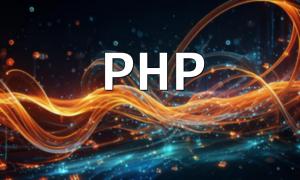With the rapid development of artificial intelligence, machine learning technologies have been widely applied across various fields. In particular, knowledge graphs and automatic question answering systems have become some of the hottest research topics in AI. This article will introduce how to build a simple knowledge graph and automatic question answering system using PHP and machine learning, helping developers better understand the practical applications of these technologies.
First, let’s define the concept of a knowledge graph. A knowledge graph is a structured way of representing knowledge by organizing and connecting different knowledge points into a network. Each knowledge point has a unique identifier, and they are connected through various attributes and relationships. Knowledge graphs can represent various types of knowledge, such as entity relationships, event relationships, etc.
In PHP, we can use graph databases to store and query knowledge graphs. Neo4j is a very powerful graph database that is not only efficient but also highly scalable, and it provides a complete PHP client library for convenient integration. Below is a simple PHP example that demonstrates how to create nodes and relationships within a knowledge graph using Neo4j.
require_once 'vendor/autoload.php';
use GraphAware\Neo4j\Client\ClientBuilder;
// Connect to Neo4j database
$client = ClientBuilder::create()
->addConnection('bolt', 'bolt://localhost:7687')
->build();
// Create a person node
$client->run("CREATE (n:Person {
id: 1,
name: 'John Smith',
birthYear: 1990
})");
// Create a company node
$client->run("CREATE (n:Company {
id: 2,
name: 'ABC Company',
industry: 'IT'
})");
// Create a works-at relationship
$client->run("MATCH (person:Person {id: 1}), (company:Company {id: 2})
CREATE (person)-[:WORKS_AT]->(company)");
echo "Knowledge graph nodes and relationships created successfully!";
The above code demonstrates how to connect to a local Neo4j database using the PHP client library, create a "John Smith" person node and an "ABC Company" company node, and establish a "works-at" relationship between the two.
Next, we will explore how to implement an automatic question answering system using natural language processing and machine learning technologies. This system can understand user input questions and provide relevant answers based on the knowledge graph. In PHP, we can use libraries like jieba-php for Chinese word segmentation and TensorFlow for machine learning model training and inference.
Here’s a simple example showing how to use jieba-php and TensorFlow to process user questions and match answers:
require_once 'vendor/autoload.php';
use Fukuball\Jieba\Jieba;
use Fukuball\Jieba\Finalseg;
use TensorFlow\Tensor;
use TensorFlow\Session;
use TensorFlow\Graph;
// Initialize jieba-php
Jieba::init();
Finalseg::init();
// Chinese word segmentation
$words = Jieba::cut('How are you?');
// Convert to tensor
$input = new Tensor($words);
// Load the saved model
$session = new Session();
$graph = new Graph();
$session->import($graph, file_get_contents('model.pb'));
// Run the model
$result = $session->run([ 'input' => $input ], [ 'output' ]);
echo "Answer: " . $result['output'];
This code initializes jieba-php to perform Chinese word segmentation on the user’s input question. It then converts the segmented words into a tensor, loads the trained TensorFlow model, and runs the model to generate an answer.
Through the examples above, we can see how PHP and machine learning technologies can work together to quickly build knowledge graphs and automatic question answering systems. By leveraging the powerful capabilities of the Neo4j database and flexible machine learning libraries like TensorFlow and jieba-php, we can create more intelligent and automated systems, enhancing development efficiency.
In conclusion, PHP and machine learning provide developers with a powerful toolkit for efficiently managing knowledge graphs and implementing intelligent automatic question answering systems. I hope this article has provided valuable insights and inspiration for your research and practice in this field.









